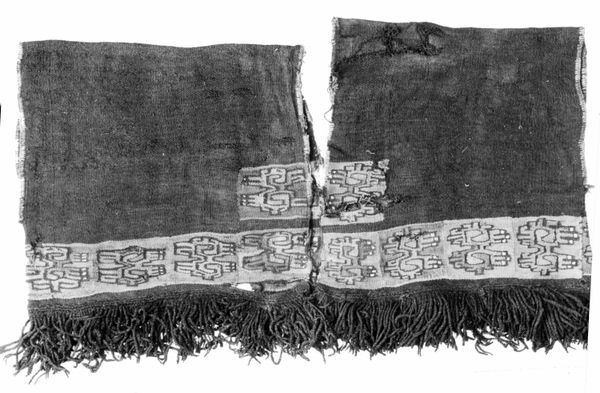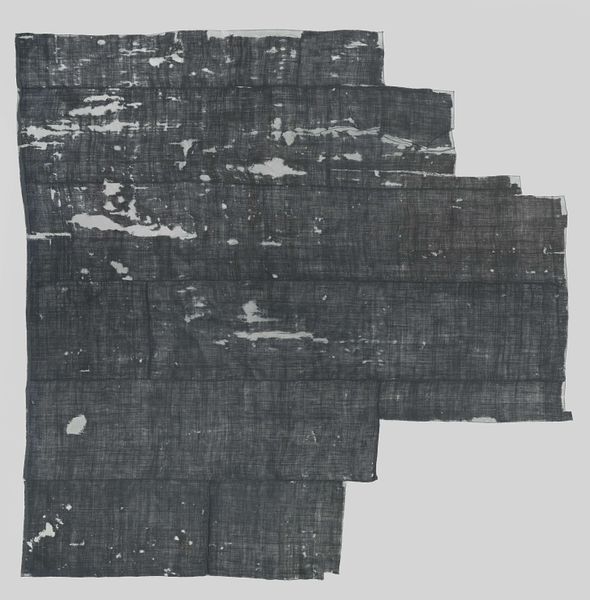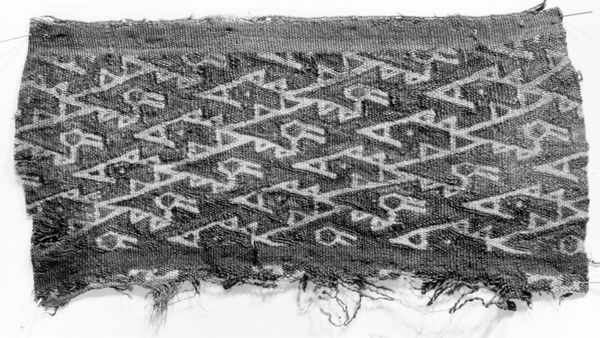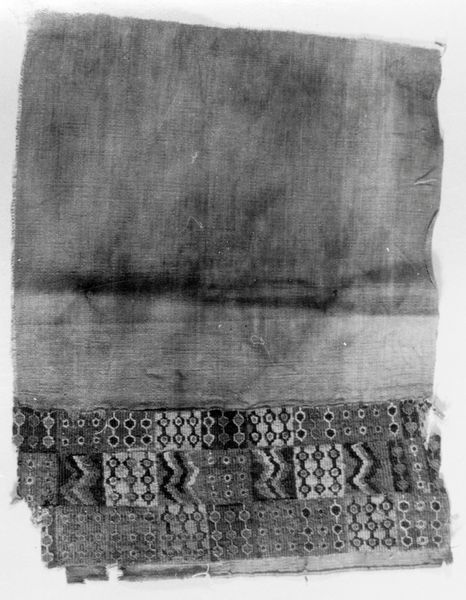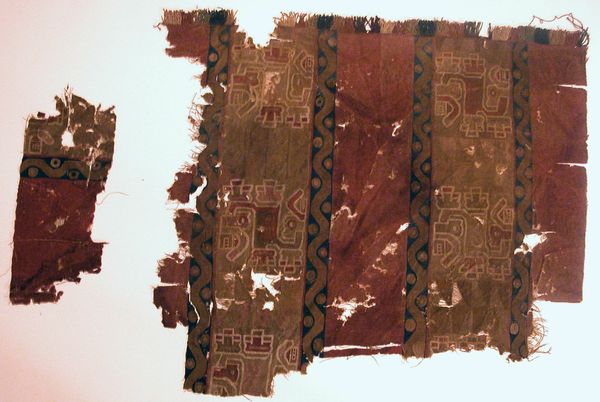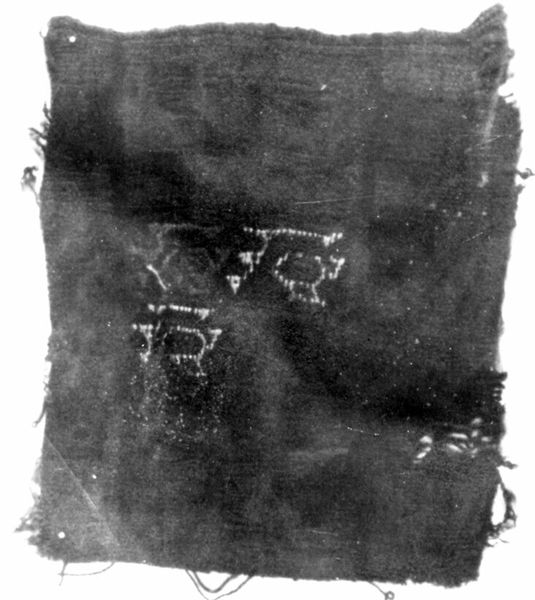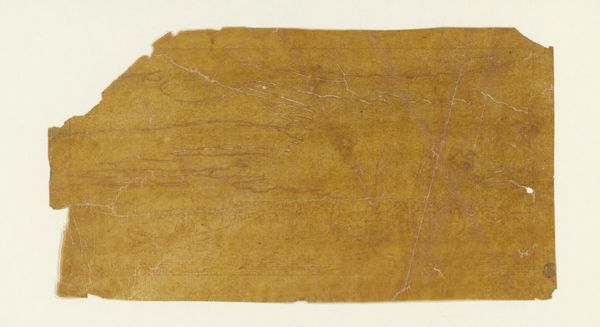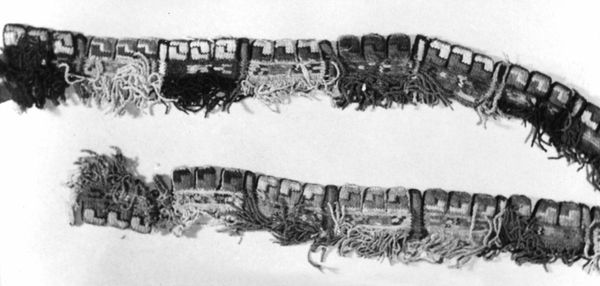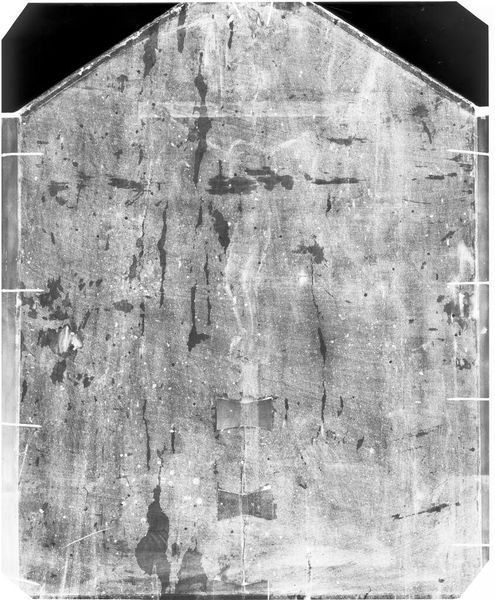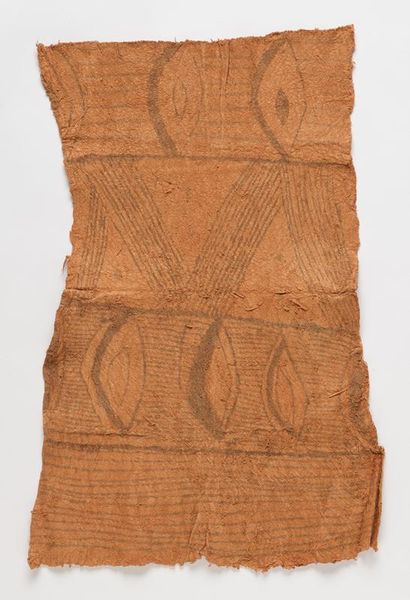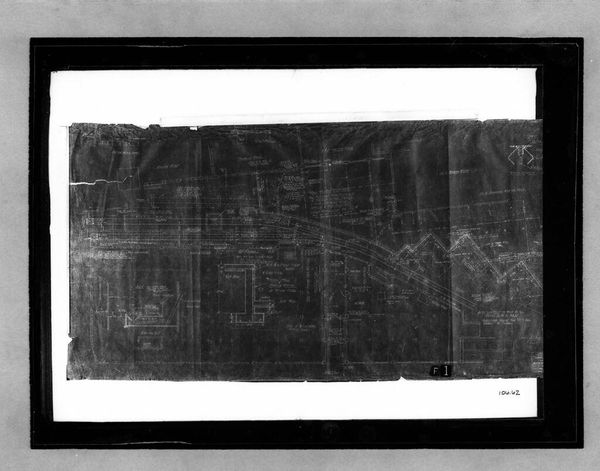
fibre-art, weaving, textile
#
fibre-art
#
sculpture
#
textured
#
weaving
#
textile
#
texture
#
indigenous-americas
Dimensions: 101.6 × 27.9 cm (40 × 11 in.)
Copyright: Public Domain
Curator: Welcome. We’re looking at "Fragments," a textile from the Nazca culture, likely crafted sometime between 700 and 900 AD. It’s currently held here at The Art Institute of Chicago. Editor: It appears so fragile, yet it radiates strength. The muted colors and repetitive patterns create a very somber but sophisticated mood. The visible degradation reminds me how human hands age even materials. Curator: Indeed. Consider that this textile comes from a society where such objects were highly valued. Weaving was deeply intertwined with social status, religious beliefs, and economic power. This textile embodies both the ingenuity and complex hierarchical structures of the time. Editor: The skill and labor put into creating this type of weaving fascinates me. What natural materials were used? The evenness of the threads makes me curious to better understand how indigenous materials and production methods developed in Nazca culture. This work stands at an important intersection of craft and social meaning. Curator: Absolutely, the raw materials certainly hold important context. Furthermore, the imagery incorporated carries a layered symbolic meaning relating to ritual practice. Analyzing textile designs is also how we decipher political structures during the Middle Horizon period. These cultural messages embedded within, and their distribution amongst people, help illuminate shared systems of power. Editor: To imagine the repeated motions, the decisions of joining threads with patterns by hand; it creates another sense of value, of the time invested. It seems appropriate, then, to recognize the artistry behind what may also function as documentation. It's tempting to connect it to contemporary conversations around art as labor, don't you think? Curator: Certainly, framing this work allows visitors a lens into thinking about social and creative practices during its historical epoch. Editor: Looking at it now, I can’t help but appreciate its endurance and the dedication involved in producing something so intricate from very minimal technology. Curator: A true relic with much to teach.
Comments
No comments
Be the first to comment and join the conversation on the ultimate creative platform.
